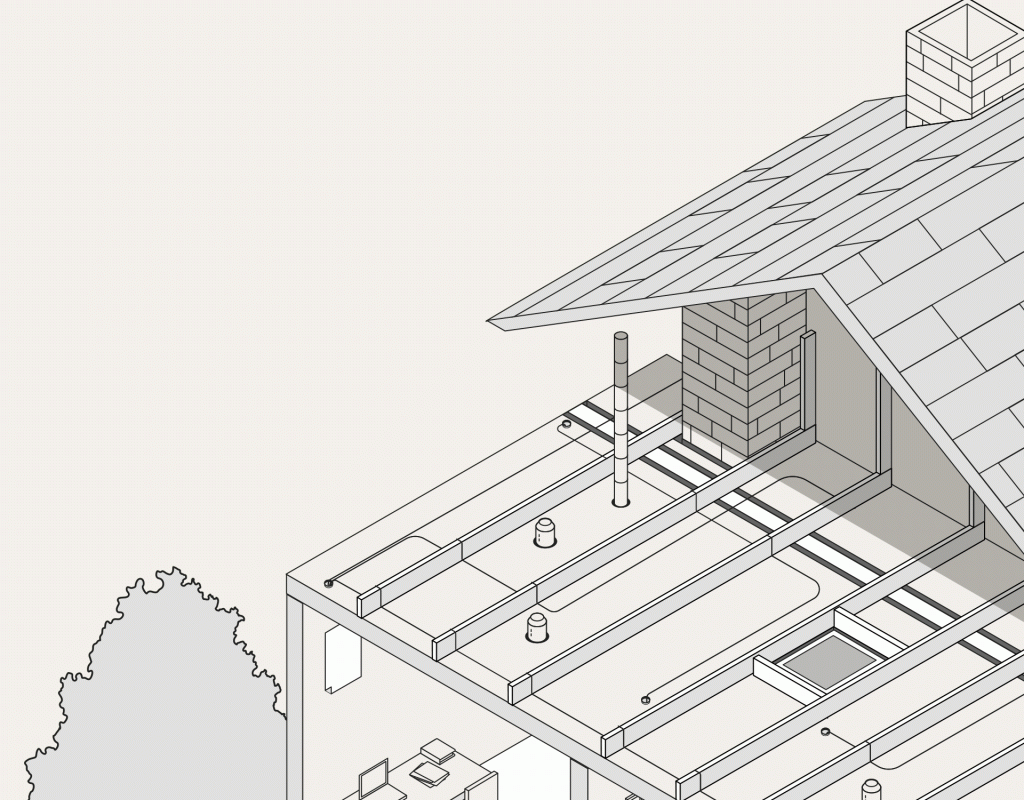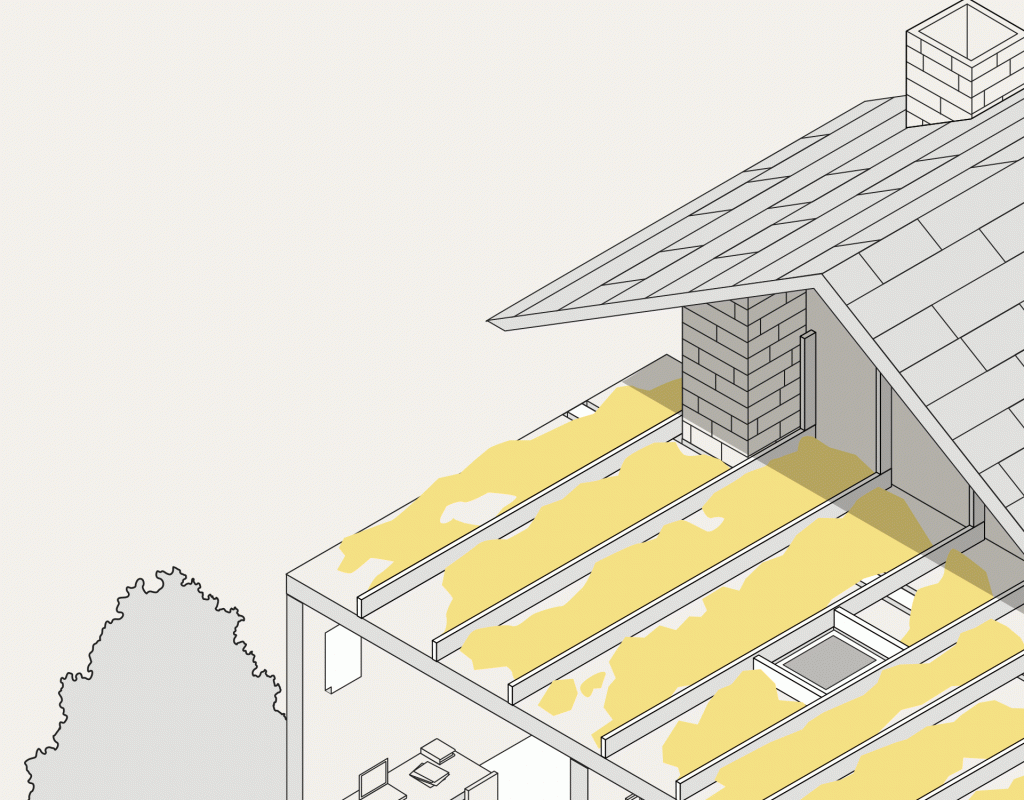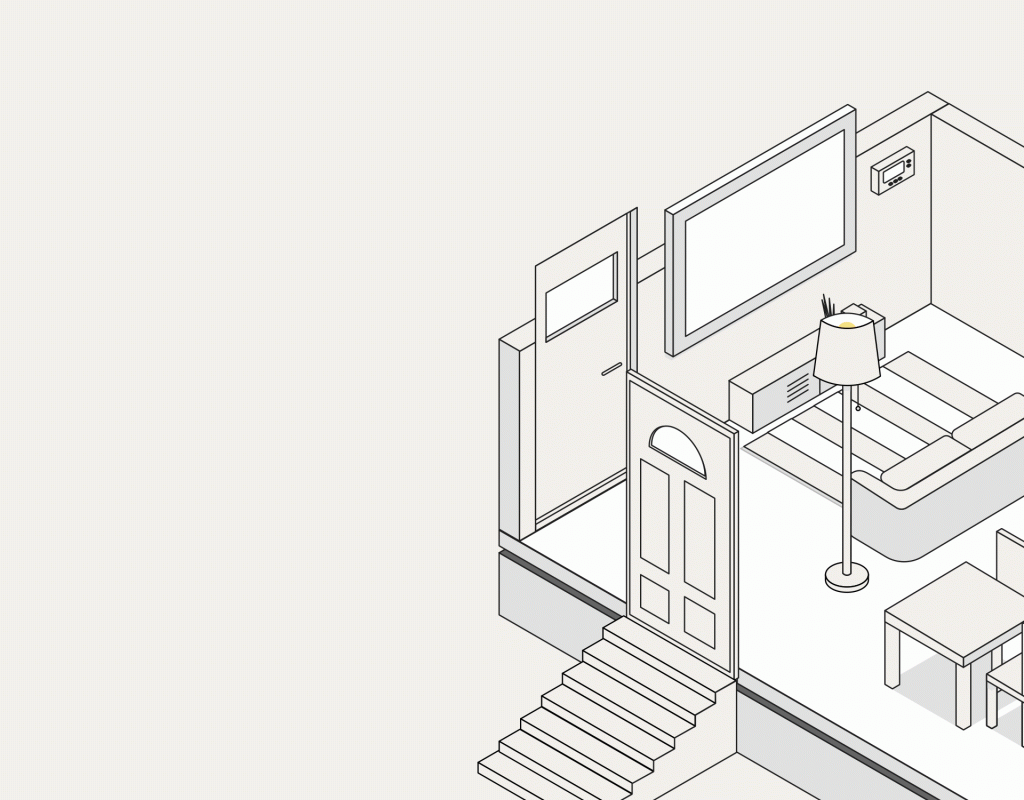The sources of inconsistent temperatures go way beyond windows and doors.
A long list of potential problems with your house. Just what you wanted to read, right? But before you go running away, hear us out.
Many houses—especially those built before 2000—experience home discomfort issues: in the winter, the house is hard to heat, and the floors are cold to the touch. In summer, rooms are hot and stuffy. Sound familiar?
People often think that getting new windows and doors, or new siding will solve the problem. While these upgrades may help a bit, they won’t solve the root problems behind uneven temperatures.
The sources of hot and cold spots goes beneath the surface into hidden spaces you often don’t think about: attics, basements, walls, and crawl spaces.
Here are the top 13 weak points that Sealed finds in homes:

1. Top plates of wall frames
The spot where your attic floor and wall frames meet (the “top plate”) is a major source of air leaks. Typically hollow and uninsulated, the frames are a channel for a lot of unwanted airflow into the attic. They’re the number one weak spot in your attic floor.
2. Attic hatch
Without proper sealing and insulation, the entry-way to the attic is like a giant crater in the attic floor for air to leak through both into and out of the attic. If you focus an infrared camera on it, you can see just how much heat transfers through this weak spot.
3. Recessed lighting fixtures
They may be pretty to look at, but recessed lighting fixtures can wreak havoc on your home’s temperature. Each fixture puts an open hole in your ceiling, allowing heat to escape into your attic in the winter, and hot air to crawl inside in the summer.
4. Pipes and electrical wiring
Every hole in your house makes space for unwanted air-flow. All of the little holes that get created for pipes, plumbing fixtures and electrical wiring become passthroughs add up to create invisible little wind tunnels in the house.
5. Attic floor

Poor insulation causes heat to rush out from the top of your house in winter. During summer, the attic becomes very hot and that permeates through the floor below, turning your top floor into a sauna. A properly insulated attic has at least 15 inches of insulation on the floor (a thermal value of R49) according to US Department of Energy standards. But most homes only have 20-30% of what is needed: 3-5 inches.
6. Roof slopes
The roof may be great at keeping out snow and rain, but it is not design to separate temperatures from the outside. Without proper insulation, your roof lets in lots of heat during the hot summer months. In winter, an uninsulated roof can let heat out of your house too fast, potentially leading to the (very costly) problem of ice dams.
7. Side attics
Especially problematic in a Cape Cod style house, this mysterious little room has a big impact on many homes’ comfort. It lets in cold air in winter, and hot air in summer. It may also provide shelter for squirrels and raccoons.

8. Foundation / basement
Cold air gets sucked in at the foundation, causing drafty rooms and cold floors in the winter. Without proper air sealing, your basement can get damp and moldy, causing a safety as well as comfort concern.
9. Crawl spaces
Think of a crawl space like a big box of cold air. It makes the floors and rooms above icy cold in winter, and may also contribute to frozen pipes and dust/mold problems.
10. Overhang
With no insulation in the cavity beneath it, an overhang acts like a big vacuum sucking the air outside up and into the house. The result? Rooms that feel drafty and cold in winter, and hot in summer.
11. Walls
Walls are meant to keep the elements outside. If your walls feel cold to the touch in winter, they’re not doing their job, probably because the wall cavity (yes, walls have empty spaces behind them!) was not insulated properly.
12. Garage ceiling / wall
Your car may be protected from the elements, but nothing else is. Any room above or next to the garage is freezing in winter, and a furnace in the summer. Your garage is actually an “outside” space, so the wall or ceiling surround it needs to create a thermal boundary from the inside space to keep the temperatures where they are meant to be.
13. Doors and windows
Getting new doors and windows can definitely help stop unwanted airflow in your house. Just bear in mind that windows are expensive (getting the most energy-efficient models new can cost upwards of $20,000) and, as you can see from the list above, they won’t solve address many of the root causes of inconsistent temperatures in the house.
Are you living in a house that feels feverish?
Our home comfort specialists at Sealed would be more than happy to help you make your home more comfortable year round.
Get a complete home comfort makeover—one that provides the real fixes that can make a long-term difference—at no upfront cost if your house qualifies.